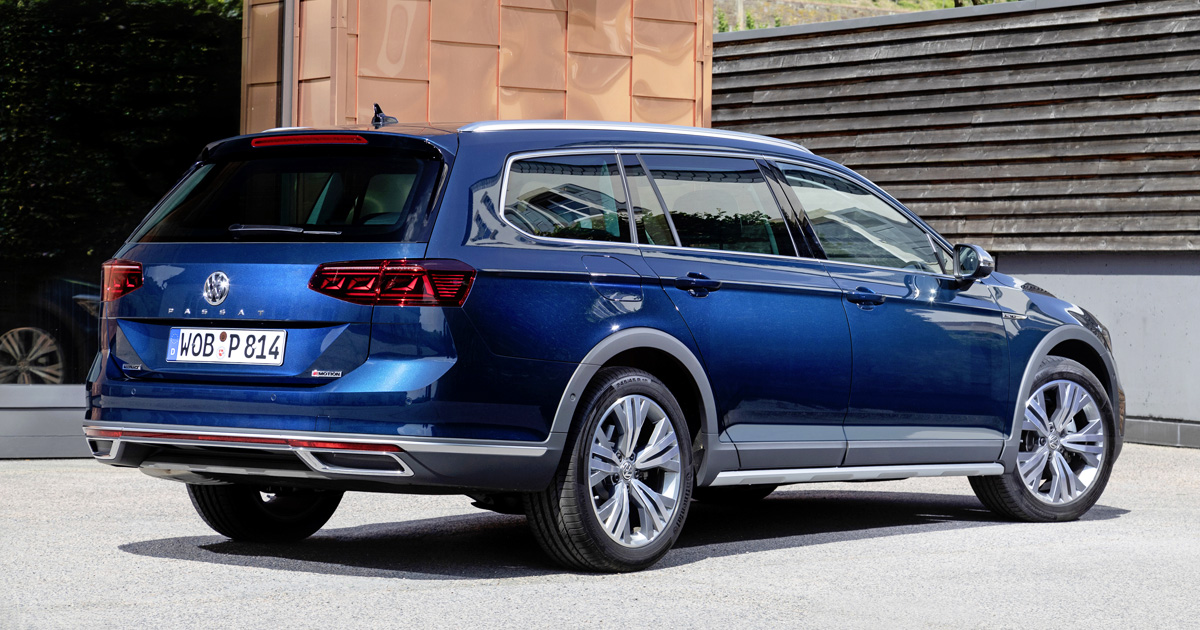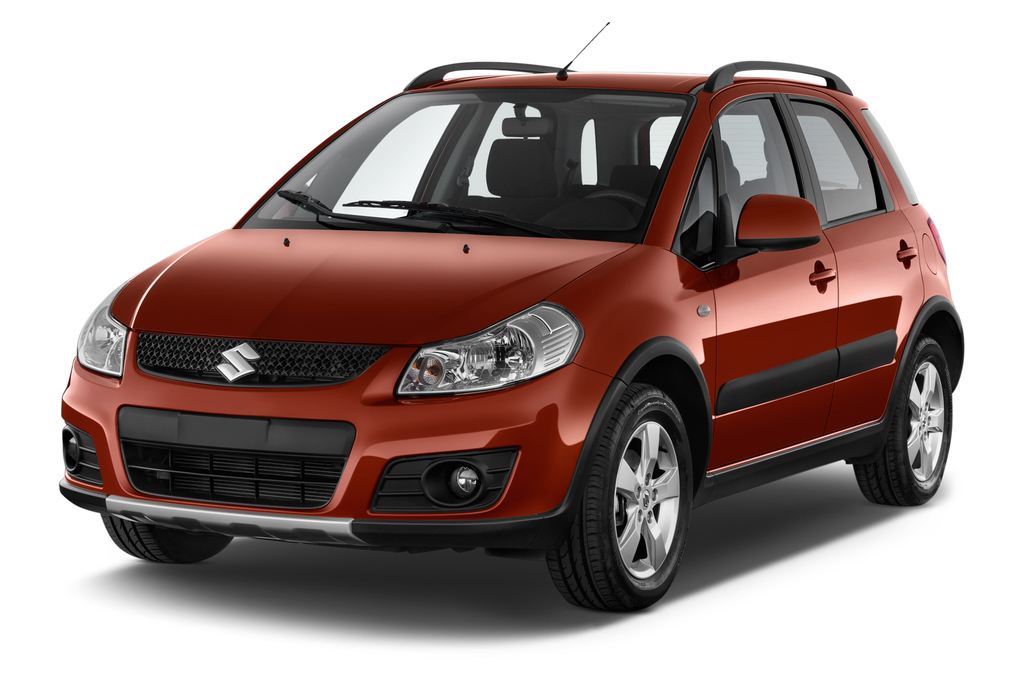
VW Passat Alltrack - everywhere on the go
For fish, for mushrooms, for lions... The old gentlemen's cabaret once sang. A similar tune must have been on the minds of Volkswagen's decision makers, because they commissioned engineers to develop a variant of the Passat that would combine the driving performance of the 4MOTION version with high ground clearance and the ability to travel light. terrain. Thus the Alltrack was born.
The modern consumer society would like to have everything (in one). A tablet that works as a computer and a TV remote control, a phone that is a navigator and a camera, or an Internet-connected refrigerator serving interesting recipes on a tray? Today, such things no longer surprise anyone. So why not try to create a machine that is more versatile than a shampoo and conditioner? Exactly. Also, it seems to me that the demand for larger, roomier 4x4s is strong as the VAG group, which already owns an Audi A4 Allroad or a Skoda Octavia Scout, decides to release the Passat Alltrack. Maybe it's because VW is no longer the "people's car" and now Skoda has taken its place? Audi, in turn, is a premium car, so the Alltrack is likely to become the link between what is meant for people and what is meant for croissants. So what does VW have in store for us?
Let's start with the dimensions - the Alltrack is 4771 mm long, which is exactly the same as the Passat Variant. Also, the width, despite the fact that the wheel arches are expanded with plastic lining, is the same: 1820 mm. So what has changed? Well, the parameters that affect off-road driving are different: compared to the Passat Variant, the ground clearance has been increased from 135 mm to 165 mm. The angle of attack increased from 13,5 degrees to 16 degrees, and the exit angle increased to 13,6 degrees (Passat variant: 11,9 degrees). Off-road drivers know that the ramp angle is equally important when driving off-road, allowing you to overcome hills. In this case, the value improved from 9,5 degrees to 12,8.
The appearance is so different from the Variant that after a while everyone will see that this is not the same ordinary station wagon that the neighbor drove. The car is fitted as standard with 17-inch alloy wheels with tire pressure indicators. The side windows are framed with matt chrome slats, a material of the same color and texture is also used for the exterior mirror housings, moldings on the lower grille and moldings on the doors. Standard exterior equipment also includes stainless steel front and rear skid plates, fog lights and chrome tailpipes. All this is complemented by standard anodized rails. All these additions make Altrack not a hunter, but a decently dressed hiker on the trail.
The center of the car is practically no different from a regular Passat. If it were not for the Alltrack inscriptions on the sill moldings and the ashtray, hardly anyone would understand what version this is. It's worth noting that when you buy the Alltrack as standard, you get cloth-combined Alcantara seats, aluminum-trimmed pedals, and automatic air conditioning.
As for the range of engines that Alltrack can be equipped with, it consists of four, or rather three units. Two TSI petrol engines develop 160 hp. (volume 1,8 l) and 210 hp. (volume 2,0 l). Diesel engines with a working volume of 2,0 liters develop 140 and 170 hp. Both TDI engines are offered as standard with BlueMotion technology and therefore start-stop systems and brake energy regeneration. Recuperation mode is also available for all petrol models. And now a surprise - the weakest engines (140 hp and 160 hp) have standard only front-wheel drive and only in the 140 hp version. 4MOTION can be ordered as an option. In my opinion, it is a little strange that a car designed to overcome "all roads" is sold only with a drive on one axle!
Luckily, we had the 170 hp version with 4MOTION drive and DSG transmission during test drives. The same solution is used in the Tiguan model. How does this system work? Under normal driving conditions, with good traction, the front axle is driven and only 10% of the torque is transmitted to the rear - a combination that saves fuel. The rear axle is switched on only gradually, when necessary, and an electro-hydraulic clutch is responsible for its inclusion. In extreme cases, almost 100% of the torque can be transferred to the rear axle.
What else did the designers think about when designing the drive of the new Passat? When it comes to driving on asphalt, to make the car more stable in fast corners, it is equipped with an XDS electronic differential lock that prevents the inside wheel from spinning. However, in the field, we can use the Offroad driving mode, which operates at a speed of 30 km/h. One small button on the center console changes the settings for the driver-assistance and safety systems, as well as the way the DSG is controlled. The consequence of this is an increase in the thresholds for the intervals of the ABS system, due to which, when braking on loose ground, a wedge forms under the wheel to increase braking efficiency. At the same time, electronic differential locks begin to react much faster, thereby preventing wheel skidding. On a slope of more than 10 degrees, the descent assistant is activated, maintaining the set speed and turning off the active cruise control. The accelerator pedal is more responsive and the shift points are moved up to take advantage of higher engine speeds. In addition, when the DSG lever is placed in manual mode, the transmission does not automatically upshift.
So much for theory – time for driving experience. As I already mentioned, cars equipped with 170 hp diesel engines were available for testing. and DSG dual clutch transmissions. On the first day, we had to overcome about 200 km of motorway from Munich to Innsbruck, and then less than 100 km of winding and charming mountain turns. The Alltrack rides on the track in much the same way as the Variant version - it is almost imperceptible that we are driving the car a little higher. The cabin has good sound insulation, the suspension unquestioningly chooses any bumps and we can say that the trip was comfortable. I just had the feeling that I was sitting too high all the time, but the seat stubbornly refused to go any further. Also, on winding, mountainous serpentines, Alltrack did not let it get out of balance and effectively passed the next turns. Only this unfortunate seat, again, did not provide very good lateral support, and maybe better, because then everyone will humble the steering wheel a little and operate the gas pedal softer. Here I must mention the burning of our test tube. A car with four people on board, a trunk unloaded to the ceiling and a bicycle holder on the roof, at a distance of 300 km (mainly along Austrian and German routes) consumed 7,2 liters of diesel for every 100 kilometers traveled, which I consider a very good result.
The next day we had the opportunity to go to the Rettenbach glacier (2670 m above sea level), where special stages were prepared in the snow. Only there we were able to see how Alltrack is able to cope in difficult winter conditions. The truth is that every SUV costs as much as the tires it is equipped with. We had regular winter tires with no chains at our disposal, so there were occasional problems going through deep snow, but overall I admit that riding the Alltrack in these fine winter conditions is pure pleasure and enjoyment.
The cheapest Passat in the Alltrack version with a 1,8 TSI front-wheel drive engine costs PLN 111. To be able to enjoy the 690MOTION drive, we must take into account the cost of at least PLN 4 for a model with a weaker TDI engine (130 hp). The most expensive Alltrack costs PLN 390. Is it a lot or a little? I think customers will check whether it is worth paying this amount for a car that is a cross between a regular station wagon and an SUV. I think there will be a lot of applicants.

